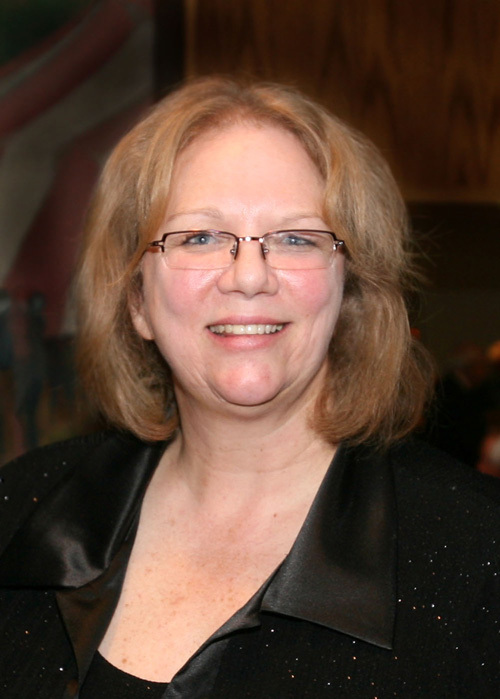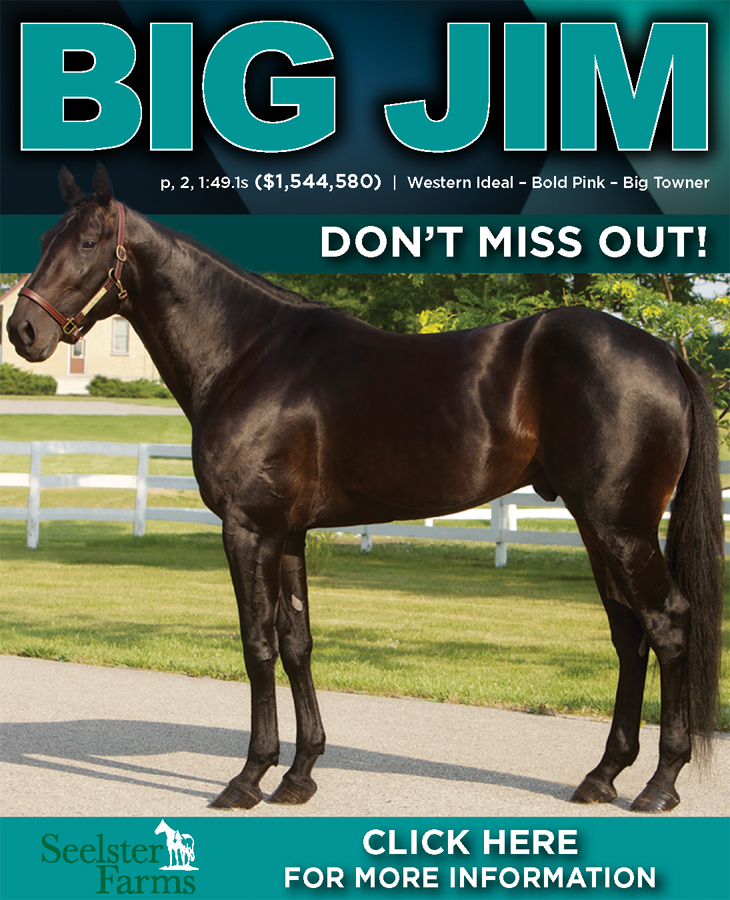

Harness racing’s indispensable Moira Fanning has spent a lifetime in love with the sport
by Murray Brown
Moira Sullivan Fanning’s equine career began as those of many young women — she loved and rode horses. As a teenager she decided to make horses her life’s work.
She was from Valley Forge Pa. Her first job in the sport was nearby as a groom working for Courtney Foos, Jr.
Very few of you reading this will likely know that name. However, for a few short years, Mr. Foos was one of the sport’s most prominent owners.
But he wasn’t only an owner, he went whole hog into the business. He established his own training center where he trained and eventually drove a significant stable of mostly high-priced horses. He was the very first person to ever claim a horse for $100,000.
He was mostly known as the owner, trainer and sometimes driver of the world champion 2-year-old trotting filly Starlark Hanover.
Fanning took care of racehorses and yearlings while working with Foos.
Foos’ career as a driver was cut short due a to a horrific racing accident at Brandywine Raceway. I’m supposing that led to his eventual exit from the business.
But I digress. This conversation is about Moira Fanning, not Mr. Foos.
Working for Foos, Fanning discovered the world of the racetrack. She immediately fell in love with just about every aspect of life there.
Among her employers were Jim Shafer’s Ozark Stable at Liberty Bell Park, The W. R. Haughton Stable where she worked under Leo Bond in the Meadowlands division and briefly for the outstanding standardbred and thoroughbred trainer Barry Abrams.
It was at The Meadowlands where she met her future husband Tom Fanning.
In 1979, she and Tom pulled up stakes and went to California to race on that circuit. She recalls a fellow named Ron Pierce residing in a neighboring tack room at Sacramento.
Her first white collar job in harness racing was when she was hired by Marv Bachrad to be his assistant at Brandywine Raceway.
“To this day he remains the best person I’ve known in the sport,” Moira said. “He succeeded the irreplaceable Colonel Dave Herman there. Marvin was kind and patient. He gave freely of his time and resources, not just to help me, but to help just about anybody in or out of the business. He walked me down the aisle when I got married. He personified the Yiddish term ‘Mensch.’”
From there she moved to Garden State Park where she worked under the legendary publicity man Bill Fidati, the man credited with discovering the perhaps more legendary news reporter, Andrea Mitchell, who is married to former Federal Reserve Chairman Alan Greenspan. It is such a small world we inhabit. Talk about six degrees of separation.
At Garden State, Hall of Famer Bob Quigley had assembled an all-star cast, much as he had previously done at The Meadowlands. It included Bob, his wife Eileen, Kim Pratt, Larry Lederman and Jay Farrar, to name a few.
Unfortunately, the demographics and its closeness to the casinos of nearby Atlantic City were destined to doom Garden State Park. It was at Garden State when that track was playing host to the Breeders Crown races that Moira had her first working relationship with her future boss, Tom Charters of the Hambletonian Society. After the Breeders Crowns were completed, Tom asked Moira if she would come to work for the Society. His assistant had just left and he desperately needed someone. She describes her tenure at Garden State as “paradise.”
She is still very close friends with many that she worked with while there. However, she could see the handwriting on the wall for Garden State.
Thus began her 37-year tenure at the Hambletonian Society, where she is now the chief operating officer.
Moira, you’ve been involved with the Breeders Crowns for a very long time. How many tracks have you been to while in the employ of the Society?
“There have been 31 host tracks, the only two tracks that I recall not going to were the one in Alberta for 3-year-old pacing colts and Canterbury Downs in Minnesota for 2-year-old trotting fillies.”
Which was your favorite and why?
“Just about every one of them had their plusses. That first one that I was involved with at Garden State was great. We had a great crowd and great racing. The famous one where Dragon’s Lair beat Nihilator at The Meadows might have been the one that put The Breeders Crown on the map. It was a great event. There was great publicity all week, before and after the event. It was truly a case of David upsetting Goliath and with a hometown hero winning it.
“The one at Roosevelt will always be remembered by Robust Hanover tripping and the infamous interview of Billy O by the most wonderful Alan Kirschenbaum.
“The ones at Pompano were very special. John Cashman was the consummate professional. He knew every aspect of the business. The win by Artsplace in the 2-year-old colt pace is still remembered by many as one of the greatest performances they’ve ever seen.
“The ones at the WEG tracks are always very special. The management there are old school horsepeople. They care about the horses, the racing and everybody associated with the events.
“Places like Northfield Park and Yonkers went all out in trying to promote the races as best they could.
“The Meadowlands is still our number one venue in the sport and every time we’ve had the races there, they’ve done a fantastic job.
“I suppose that if you asked anybody who was at Hoosier Park the first year that they hosted the events that they would say they were the best managed and the ones where the host tracks did there darndest to make it the resounding success that it became. They did this despite terrible weather conditions. They also overcame adverse challenges in this horrible year of COVID-19, when the fact that they were held at all was a minor miracle.
“The same could be said for Pocono Downs which faced challenging weather conditions both years that they held the races.”
Let’s talk about the Hambletonian. Which one was your favorite?
“I would suppose it would be the year of the dead heat. Going into the race it had lost most of its sizzle with the absence of Valley Victory and Peace Corps. It came to the point where the actual race rescued us. Who would have anticipated a dead heat in our most special race? Certainly not me or anybody else. Thank goodness for Probe and Park Avenue Joe. I don’t know this for a fact, but I can’t recall any thoroughbred classic races finishing in a dead heat.”
Through the years, The Breeders Crown has sometimes encountered problems, yet they’ve always managed to overcome them.
“We’ve had our share. The first one that comes to mind was when the Breeders Crown races were held at Mohawk. When the entries were made, Bob Key and Harold Shipp paid their entry fees together with their declaration. As is the norm in the business, everybody else declared their horses in with the entry fee to follow prior to the race.
“Mr. Key and Mr. Shipp said that the conditions specifically said that the entry fees had to accompany the declaration. Therefore the race in question should have only their two horses in it. A judge upheld the Society’s position and the race went off with all the horses in it.
“Another was the Robust Hanover situation. The horse’s connections didn’t want to pay the entry fee because the horse had to be scratched. It was clearly pointed out that the conditions stated that the only exception to the entry fee being paid was if the horse died prior to the race.
“Then [in the Hambletonian] there was the Park Avenue Joe and Probe dead heat which actually went to court, but thankfully was settled outside of it.”
You’ve had two bosses in your 37 years at the Society, Tom Charters and John Campbell. No surprise that they are both Hall of Famers. Tell us about them.
“Tom and I are kindred spirits. We both love the horses, the history of the sport and food. If there is a Bob Evans around, we both know where it is. Tom is looked upon as being methodical and I suppose that he is. But he has been an amazing steward of both the Society and of harness racing. He is a very rational person who is very adept at getting along with people and reaching his goals whatever they might be.
“John is a great ambassador of the sport. He is very outgoing and is not shy. He was working on standardizing racing rules even before he became president. That committee hasn’t attained that goal as of yet, but I’m sure he will continue working towards that end. He is terrific on the phone. He knows how to get along with people and holds no grudges. I suppose that being a former driver helps him in that regard.”
Tell us about some of the best people you’ve been associated with while at the Society.
“Two that immediately come to mind are Andy Grant and John Cashman.
“Andy was a man of few words, but like E.F. Hutton when he spoke people listened. When it came to harness racing in general and the Hambletonian Society in particular, Andy was a very altruistic person. He was a great listener. When he felt that something was beneficial to the sport, he would pick up the ball and run with it.
“John was more of a front-and-center type of guy. He was consumed with harness racing — every single aspect of it. He was a font of knowledge. If there was something about the sport that he didn’t know about, then it probably wasn’t worth knowing.”
One of, if not the primary responsibility of the Hambletonian Society, is the maintenance of stakes races and the payments associated with them.
“It certainly is and we have some wonderful people administering them. Even though regional stakes have cut into the participation of Grand Circuit type events, we’ve managed to hold our own. Actually, in recent years, stakes payments have been up. Getting tracks to continue with these events can be an ongoing issue. That’s an area where John Campbell really shines. He is frequently on the phone working to get homes for these events from year to year. I can well understand the horsemen’s view in drifting away from them. They are expensive, transportation and the movement of help is difficult. Regional stakes are cheaper and easier to handle.
“Nevertheless, I think that events open to everyone are important and need to continue. Open stakes racing is much more prestigious and more indicative of who the best horses are. After all, that’s what racing is all about. I don’t know if it fits here, but I feel I need to make mention of Bob Key who has been our biggest customer for decades. He pays more sustaining and entry fees than anybody else in the game and he does it without the aid of partners.”
Your husband is the successful horse trainer Tom Fanning. What’s it like being married to a horse trainer?
“It’s wonderful. I am envious of him being around horses most of the time. I get a great perspective on his part of the business from him. He is smart and even keeled. Both of us being involved in racing is a big plus.”
You have two adult daughters, what about them?
“They are wonderful as well. Veronica is a first grade teacher, while Caroline is an assistant editor at Reader’s Digest. We are very proud of both of them.”
Have a question or comment for The Curmudgeon?
Reach him by email at: hofmurray@aol.com.
















